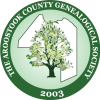When doing Irish research you need to understand the territorial boundaries before you start.
Province = the largest area in Irish records.
Originally there were 8 counties in each of the 4 provinces. In 1922 Ireland was divided into 6 counties in Northern Ireland and 26 in the Republic of Ireland.
County = the 32 counties are grouped into 4 provinces: Munster, Leinster, Connacht, and Ulster. When the Irish Republic was created in 1922 Cavan and Monaghan were removed from Ulster and included in the Republic. Some county names in the Republic were changed.
Townland = now the smallest geographical/ administrative land unit in a county, usually a few hundred acres although they can be a few acres to thousands. These names would be known by the populace for centuries. There are around 60,000 of them. When surveyors were out mapping they would have marked these lands, as they were also used for collecting taxes etc. Before roads and streets were laid out, your address was the Townland. Wills will usually describe the testator i.e. Hugh McCaughan, Brackney (Hugh McCaughan from Brackney).
Civil Parish = civil parishes are areas used in local government. They may include parts of several Roman Catholic (RC) or Church of Ireland (C of I) parishes. A C of I parish is usually named for the oldest or largest church in the area. A RC parish is usually named after the main church in the area.
Barony = is the largest unit within a county but, there are also Registration Districts for civil registration purposes just to make things harder for the researcher.
Apparently the General Index to the Townland, Parishes and Baronies of Ireland (1851) has standardized spellings of place names. Townland in Poor Law Unions has details of District Electoral Divisions.
Griffith’s Valuation was published between 1847 and 1864. There are no complete census returns for the 19th century so this is a good source. It lists heads of households, who owned the land and those who rented from them and what was rented such as houses, gardens, and farm buildings. Single women and widows may be named.
Revision Books (Cancelled Books) contain updates done every few years. This will list new names and dates of occupancy and may give you ideas on dates of deaths of previous occupants or the possibility of their moving or even emigrating.

